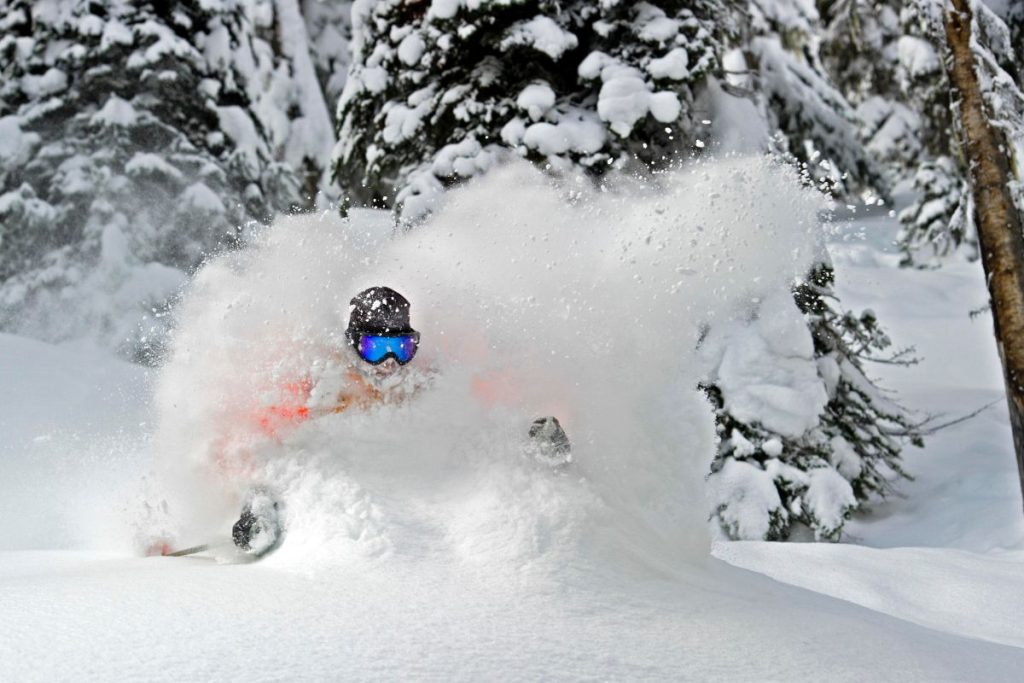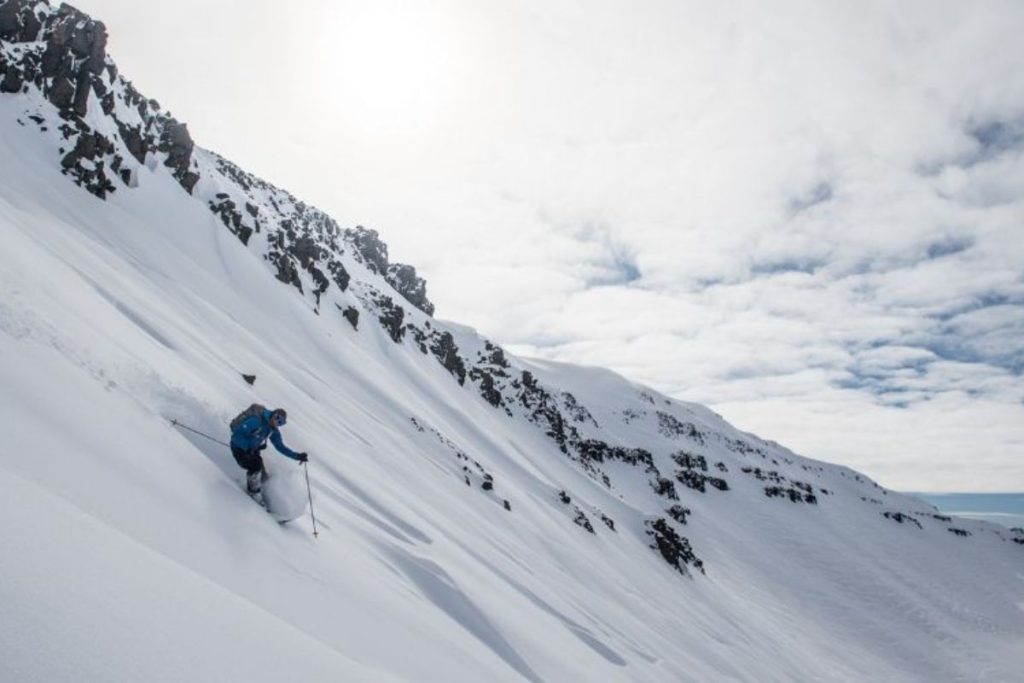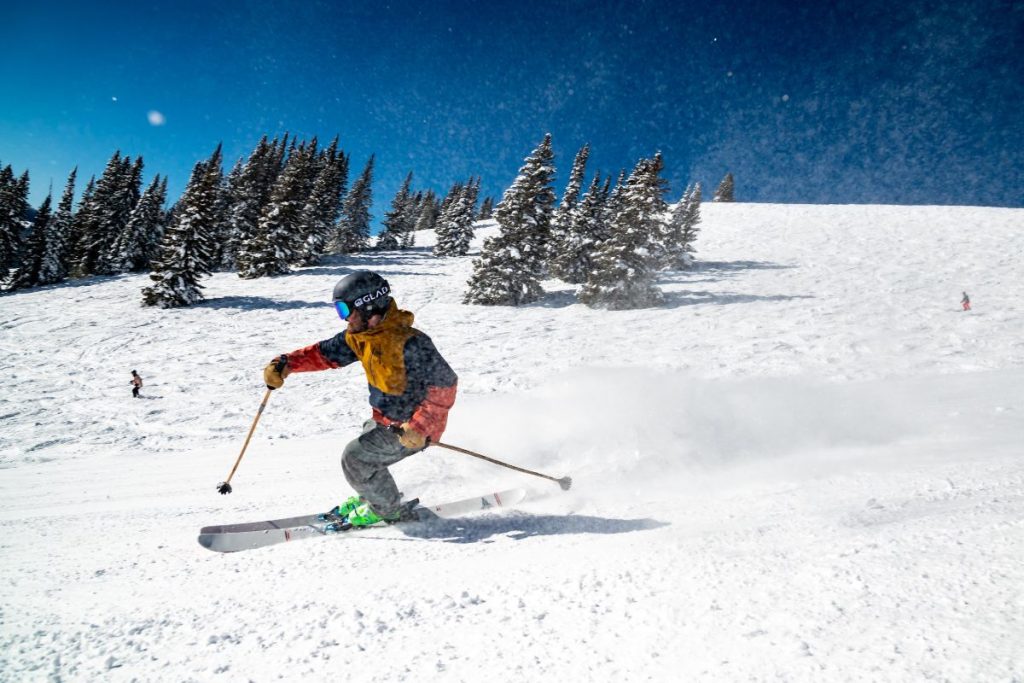If you have ever participated in a heli ski experience, you will know that having the right equipment is essential. Not only does the heli ski gear protect you from the elements out in the backcountry, but it can also improve the entire experience overall. Regarding heli ski gear, experienced skiers stick to functional items that will last, especially when out in the wilderness.
If you have never been heli skiing before and are interested in getting started, this guide is here to help.
Pure Powder aims to encourage everyone to participate in a heli ski adventure at least once in their lives. To achieve that mission, we strive to make the sport as accessible as possible, including all the knowledge that goes with it. This article will introduce you to the core equipment necessary for a successful heli ski trip.
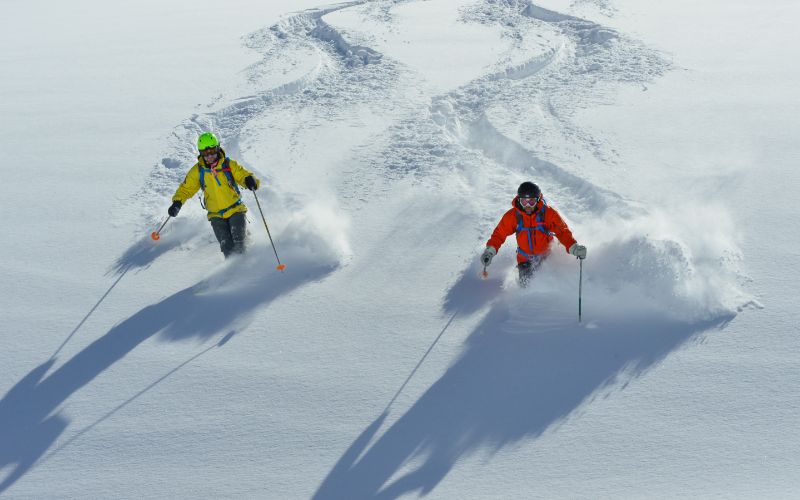
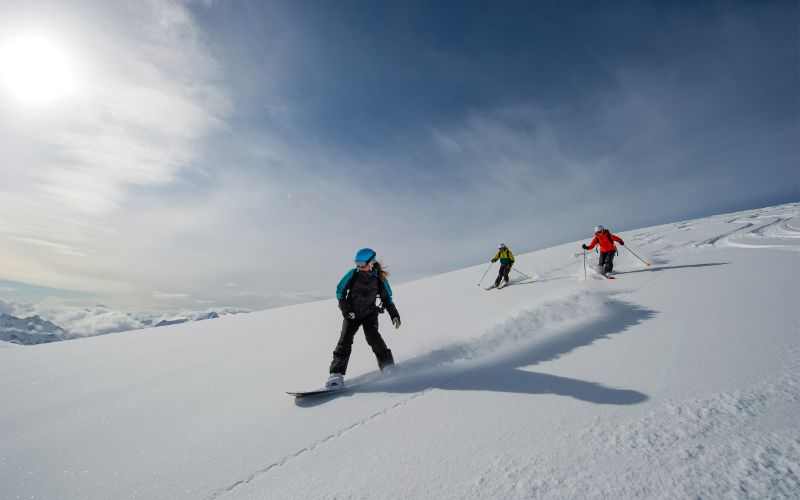
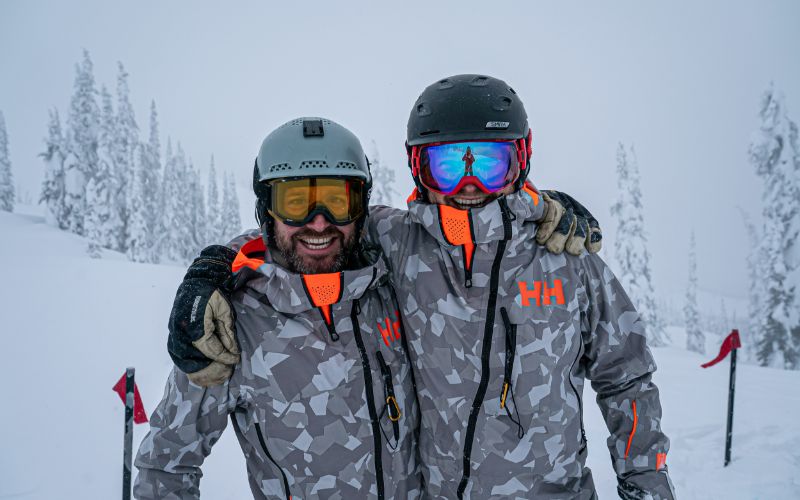
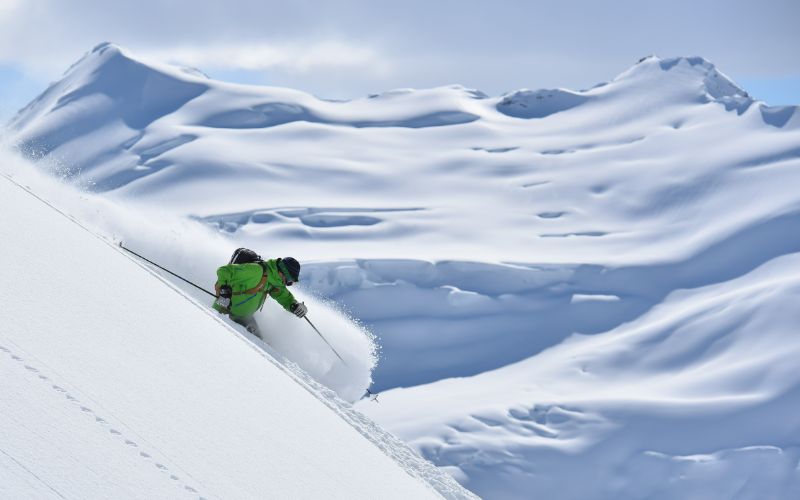
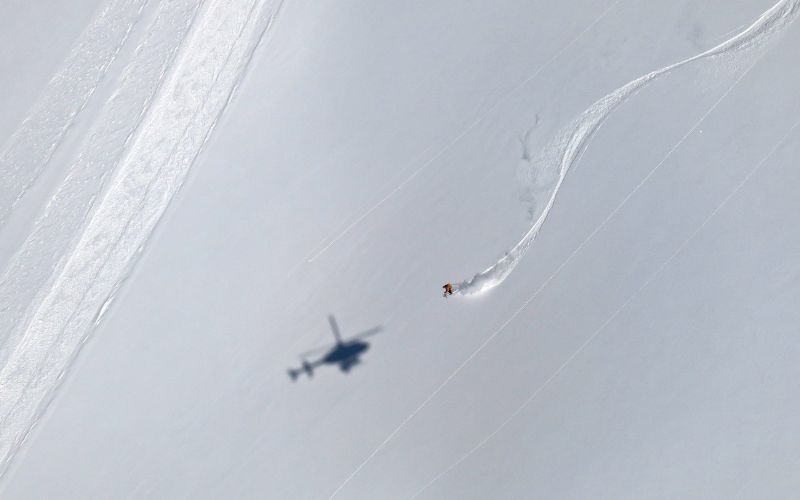

Skis And Bindings
Depending on the trip you book, your heli ski guide may provide you with certain equipment to make the most of your adventure over the snow – meaning suitable skis may be provided to you. However, it can’t hurt to learn a little more about the kind of skis and bindings necessary to undergo a successful heli ski adventure. When discussing the sport of heli skiing, the most apparent and essential piece of equipment you will need is skis and bindings. Donning the right skis will ensure that you are comfortable during the journey – something that will further enrich the experience as you will not have to constantly worry about whether your skis fit correctly or can handle the terrain. In this section, let us look at some of the most important aspects to consider when choosing your skis and bindings.Choosing Your Skis
When deciding on skis for your next heli ski trip, the technical jargon can take time to handle. Knowing the basics will also help you better communicate with a sales representative or heli ski guide about getting the perfect skis for you.Choose The Right Skis For The Terrain
This is one of the more accessible elements to understand. This is primarily because the ski types are typically named after the terrain they are best suited for. The choices you can consider, especially if you want to take part in a heli-ski trip, are as follows: Downhill or Slalom Skis: Also called carving skis, these are ideally suited for all age groups and those of any experience level and best for skiing the hard-pack pistes in ski resorts. All-Mountain Skis: These are a little bit wider and more ‘all-rounder’ skis suited for well-groomed runs and powder snow in the side country (just off the piste) Powder Skis: As the name suggests, these are designed to handle powder snow best, (or backcountry skiing)—a definite favourite of many heli ski participants. These skis offer extra floatation and stability and as such these wide powder skis are the ideal choice for heli skiing. Touring Skis: For those that are planning on walking up to earn your turns, you would need to consider touring skis. These are generally lighter than alpine skis, which helps when climbing.
Find Your Preferred Length
Now that you understand what skis you may want to try during a heli ski trip, the following essential aspect of choosing skis is looking at the length of the skis. A ski’s length should be adjusted to match your body shape and size. This is especially true on a heli ski trip, where you are skiing in untracked powder snow. If the skis are too long, they will feel unwieldy, but they can feel slow or unstable if they are too short. Generally, the rule of thumb is that when the tail of your skis is on the ground, the tips of both skis should be able to touch in a position below your chin. However, there are a few other factors you may also want to consider when choosing the length of your skis:- Skier weight
- Skiing style
- Terrain
- Personal preference
- Ski Bindings
Clothing And Ski Boots
Your ski attire is also vital to your enjoyment – you will want to be comfortable and warm whilst out and about on your adventure. Layering is key; in order to best prepare yourself for a variety of conditions, you should aim to be able to add or remove layers to suit the climate on any given day. Goggles and gloves suited to the snowy conditions are equally important, offering additional comfort and protection when facing the natural elements. It is usually recommended to layer up with a moisture-wicking base layer, a comfortable mid-layer, and a waterproof top layer to keep you shielded from the elements throughout your trip. We recommend Ellis Brigham for all of your clothing needs. For a beginner in the heli ski space, the skis are the most essential piece of equipment, and everything else is secondary. Although having skis well suited to you on a heli ski tour may be critical to your performance, having the proper ski boots is equally essential. We recommend Surefoot for all of your ski boot requirements.
Ski Boots
It is essential to highlight that, in practice, a heli ski boot is no different from ski boots for alpine or off-piste skiing. With any ski trip, you want the most comfortable boot possible, but this is especially true on a heli ski trip. With these considerations in mind, let us look at some elements for heli ski beginners to look out for when purchasing ski boots.Shell Fit
Ski boots differ significantly from the average hiking boot. This is because a ski boot generally comprises two components: A hard outer shell made of hardened plastic – this layer allows the boot to connect to the ski. Then there is also an inner layer of softer material, in which the foot will be supported. Thus when finding the right-sized boot for you, it is vital to keep both of these components in mind. When on a heli ski trip in remote areas, far away from the base camp, it is essential to have good-fitting ski boots to avoid blisters. Experienced boot fitters use a method called shell fitting to judge what would be the best size for you. A shell fit is done by removing the soft inner layer from the hard outer shell. Then you place your foot into the boot’s shell and push your foot as far forward as possible until your longest toe touches the front of the boot. From there, you can use your fingers to judge, but you are looking for between five to nine inches of space between the back of your foot and the boot shell. This way, you can account for both components of ski boots when choosing the right size.Ski Boot Last (Width)
One should look at more than just the length of the ski boot. Again, when you’re on a heli-ski trip, you must find the most comfortable boot possible. Therefore you must make sure to account for the width of the boot as well. Generally, a ski boot has three widths (which, in ski terminology, is called a last). These include:- Narrow Last: This forefoot width is about 97 – 98 mm.
- Average Last: This has a forefoot width of about 100 mm.
- Wide Last: Generally a forefoot measurement between 102 and 106 mm.
Ski Boot Flex & Stiffness
The final aspect of ski boots that you will want to pay attention to is the stiffness of the boot. This refers to how easy it is to bend the boot forward, and there is an excellent range within the ski boot market. The flex or stiffness is measured on a rating scale from 50 to 130, with 50 being soft and flexible and 130 being extremely stiff. The stiffness of the ski boot is directly related to your ski speed. The stiffer the boot, the faster you will ski. Therefore if you are a beginner skier, you should look at a stiffness rating of about 60-80, which falls under the soft category. However, in terms of heli ski experiences, a medium-feel boot with a rating of 85 or higher is generally suggested.
Safety Equipment
Finally, it is important to list a few critical pieces of safety equipment you will need while out on the slopes. Although Pure Powder dedicates itself to providing the safest heli ski trips possible, one can never account for all accidents or emergencies. During your heli skiing trip, your mountain guide will always be equipped with a full suite of emergency care and first aid kits. However, it can never hurt to prepare yourself for any eventuality and gain some familiarity with these useful safety tools. Avalanche Transceiver: Also called an avalanche beacon, this little gadget will emit a signal, making finding those caught in an avalanche much easier. When people are buried under snow, time is of the essence in determining survival rates, making this safety tool a heli ski essential. Avalanche Probe: Probes are typically measured to be around 240 – 300 cm and are used to pinpoint victims stuck in an avalanche after receiving a general location from the receiver. Shovel: This is an efficient tool for participating in any heli ski activity. A portable or foldable shovel can help dig out a buried skier and save valuable time in an avalanche rescue mission. Backpack: A waterproof backpack carrying liquids and food rations is also essential. There are various backpacks designed explicitly for skiing that can include ski poles or other small gadgets related to skiing, making moving around a lot easier on the mountainside. Mobile Phone: Our tour guides generally carry a satellite phone if your trip is planned outside of cell reception. But packing a mobile cellular device of your own in the case of an emergency can be a lifesaver.
